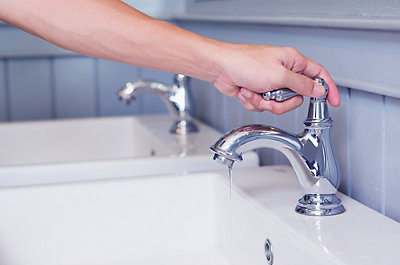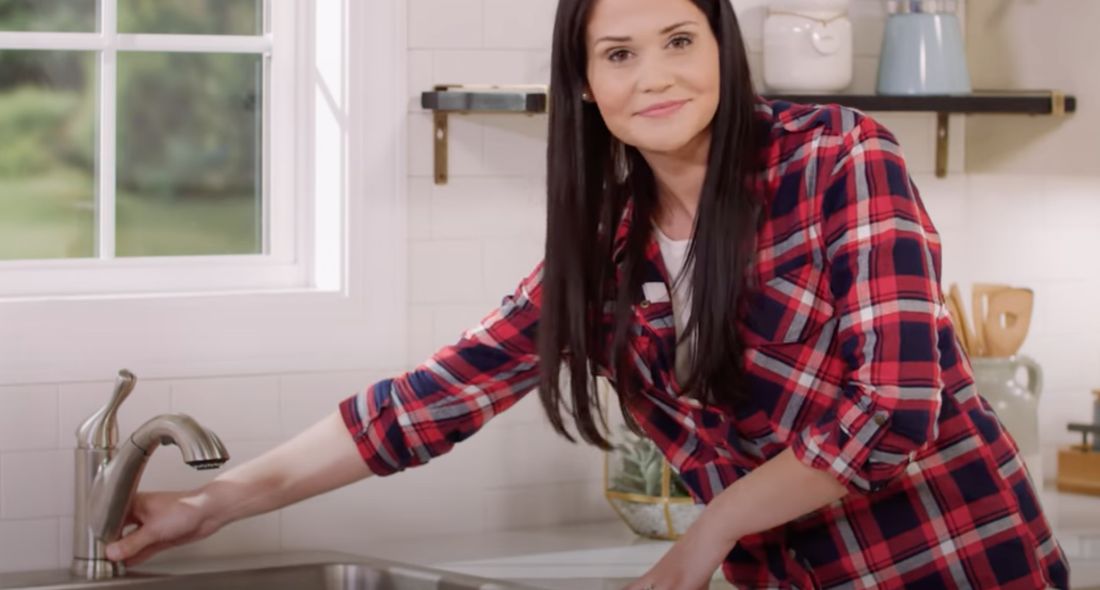What're your ideas with regards to Why It's Important to Fix Leaky Faucets?

Leaking taps could seem like a minor hassle, however their impact goes beyond just the inconvenience of the noise. From wasting water to incurring unnecessary financial costs and health threats, overlooking a leaking faucet can lead to numerous consequences. In this short article, we'll look into why it's crucial to address this typical family issue immediately and properly.
Wastefulness of Water
Ecological Effect
Leaking taps add dramatically to water waste. According to the Environmental Protection Agency (EPA), a solitary tap leaking at one drip per secondly can squander greater than 3,000 gallons of water per year. This not only pressures water resources however additionally affects environments and wild animals dependent on them.
Financial Expenses
Raised Water Bills
Beyond the environmental effect, leaking taps can blow up water costs substantially. The built up wastage in time equates into higher energy expenditures, which might have been prevented with timely repair work.
Potential Home Damage
Moreover, long term leaking can result in damage to components and surface areas surrounding the faucet. Water buildup can cause discoloration, rust, and also structural concerns if left ignored, causing additional repair service costs.
Wellness Worries
Mold and Mildew Growth
The continuous presence of moisture from a trickling tap creates an ideal atmosphere for mold and mildew and mold growth. These fungi not only jeopardize interior air top quality yet additionally pose health risks, especially for individuals with breathing conditions or allergies.
Waterborne Illness
Stagnant water in leaking faucets can become a breeding ground for microorganisms and various other microorganisms, enhancing the risk of waterborne diseases. Impurities such as Legionella germs flourish in stationary water, possibly resulting in serious ailments when ingested or breathed in.
DIY vs. Specialist Repair service
Pros and Cons of Do It Yourself Repair
While some might try to repair a trickling faucet themselves, do it yourself repairs include their own collection of obstacles. Without proper understanding and devices, do it yourself attempts can intensify the problem or bring about insufficient repairs, prolonging the problem.
Benefits of Hiring a Professional Plumber
Hiring an expert plumber guarantees that the underlying root cause of the leaking faucet is dealt with efficiently. Plumbing technicians have the know-how and equipment to detect and fix faucet problems successfully, saving time and reducing the threat of further damages.
Step-by-Step Overview to Repairing a Dripping Tap
Devices Required
Prior to attempting to repair a leaking tap, gather the required tools, consisting of an adjustable wrench, screwdrivers, replacement parts (such as washers or cartridges), and plumber's tape.
Usual Faucet Issues and Their Solutions
Recognize the kind of tap and the particular concern causing the drip. Typical problems consist of damaged washing machines, rusty valve seats, or defective O-rings. Refer to producer directions or on the internet tutorials for detailed support on repair services.
Preventive Measures
Normal Maintenance Tips
To avoid leaking faucets, execute regular maintenance such as cleaning aerators, checking for leaks, and replacing damaged components quickly. In addition, take into consideration mounting water-saving devices or upgrading to a lot more reliable fixtures.
Importance of Prompt Repairs
Addressing trickling faucets as soon as they're noticed protects against additional water wastage and potential damage, eventually saving both water and cash over time.
Influence On Property Value
Perception of Well-Maintained Building
Maintaining a home in good condition, including dealing with upkeep issues like trickling taps, boosts its regarded worth and worth amongst potential customers or lessees.
Influence on Resale Value
Properties with well-kept plumbing fixtures, including faucets, command greater resale worths in the real estate market. Attending to leaking taps can contribute to a favorable impact throughout property assessments and arrangements.
Environmental Obligation
Private Payment to Preservation
Taking obligation for taking care of leaking faucets straightens with more comprehensive efforts toward water conservation and environmental sustainability. Every individual's actions collectively make a substantial influence on protecting valuable resources.
Lasting Living Practices
By prioritizing punctual repair services and adopting water-saving behaviors, individuals add to sustainable living methods that benefit both present and future generations.
Conclusion
Resolving a leaking tap surpasses mere ease; it's an important step toward saving water, minimizing financial costs, and safeguarding wellness and home. Whether with do it yourself repairs or professional aid, taking action to fix leaking taps is a small yet impactful method to advertise liable stewardship of sources and add to a much healthier, more lasting future.
How to Fix a Leaky Faucet: Step-by-Step Repair Guide
A leaky faucet may seem like a simple annoyance, but if it's not fixed promptly, that leak could cost hundreds to potentially thousands. From water damage to mold, mildew, and high water bills, even a tiny leak can be catastrophic if left unattended. Damage like this can even affect the overall value of your home, so it's important to take the right approach for leaky faucet repair. You may need the help of a plumber in some cases, but we've got a few tips you can try on how to fix a leaky faucet before calling the pros.
Four Faucet Types
When you're learning how to fix a leaky faucet, the first step is knowing what kind of faucet you're working with! There are four common types.
Cartridge Faucets
Cartridge faucets come in one- or two-handled varieties. In one-handled cartridge faucets, hot and cold water combines in a single cartridge. In the two-handled versions, hot and cold water are controlled separately and mixed in the faucet.
Ball Faucets
Ball faucets have a single lever you push up and down to adjust the pressure and rotate to change the temperature. A slotted metal ball controls the amount of water allowed into the spout.
Compression Washer Faucets
They're the oldest type of faucet, but they're still used in many homes — especially older ones. Compression faucets have two separate handles that, when turned, raise or lower the washer that seals a water valve. This valve stops water from flowing through the faucet when it is turned off.
Disc Faucets
Disc faucets rarely need to be repaired due to their maintenance-free design. The water flow is controlled by two discs — the upper one raises and lowers against a fixed lower disc, creating a watertight seal. If your disc faucet starts leaking, you may need to replace the seals or clean residue buildup from the inlets.
Fixing a Leaky Faucet
Step 1: Turn Off the Water
Whether you're learning how to fix a leaky bathtub faucet or how to fix a leaky kitchen faucet, always turn off the water supply to your working area when you're fixing a leak. The last thing you want is a flood added to your list of things to fix.
Look for the shutoff valves below your sink or around the tub and turn them clockwise to stop the water flow. If your faucet doesn't have shutoff valves, you may need to turn off the water for the whole house. Check to make sure it's off by turning the faucet on. If nothing comes out, you're ready to start the repair.
Step 2: Take Apart the Faucet
How you disassemble your faucet depends on the type of fixture you have. You can use a flathead screwdriver to remove the caps on top of the handle or handles for cartridge and compression faucets. Inside, you should see handle screws. Unscrew these with a screwdriver to remove the handle.
Disc- and ball-style faucets will typically have an inlet screw near the handle, and removing that will reveal the interior of the faucet.
Detach the Valve Stem
For cartridge- and compression-style faucets, you'll see the inner valve stem or cartridge once you remove the faucet handles. If you have a compression faucet, unscrew the brass valve stem. If you have a cartridge faucet, pull out the cartridge. If your cartridge has been in place for a while, it may require some tools or extra force to remove it due to mineral deposits.
Examine and Replace Parts
Once you've removed the parts, check them out to confirm what needs to be replaced. You may see corroded rubber washers, O-rings, stems, or cartridges. On a ball-style faucet, check the seats and springs for damage.
If you need to repair a leaky disc faucet, check the inlet and seals on the lower disc.
Once you determine what parts must be replaced, visit your local hardware store. Bring the damaged parts with you to ensure you can purchase the correct components to replace them.
Clean Valves and Faucet Cavity
If you've removed a stem or cartridge, you may notice mineral buildup in the faucet's threads. Use white vinegar to clean the valve seat by soaking it for a few minutes, then scrub it away with a soft toothbrush and rinse with warm water. You can also clean the interior of the faucet in the same way.
Reassemble the Faucet
Once your faucet is cleaned and the required parts have been replaced, it's time to reassemble it. Put the pieces back together and slowly turn the water supply back on. Doing this slowly is crucial because too much initial water pressure can damage the new hardware you've just installed.
https://homewarranty.firstam.com/blog/how-to-fix-leaky-faucet

Hopefully you enjoyed reading our section on Leaky Faucets: Why They Happen & What to Do About Them. Many thanks for taking the time to read our post. Sharing is caring. Who knows, you might be doing someone a favor. Thank-you for going through it.